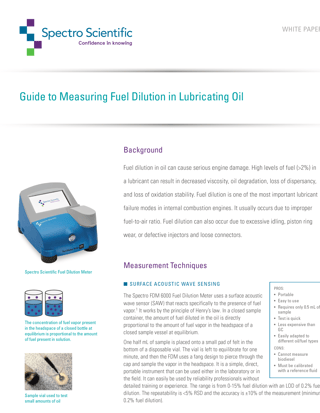 Fuel dilution in oil can cause serious engine damage. High levels of fuel (>2%) in a lubricant can result in decreased viscosity, oil degradation, loss of dispersancy, and loss of oxidation stability. Fuel dilution is one of the most important lubricant failure modes in internal combustion engines. It usually occurs due to improper fuel-to-air ratio. Fuel dilution can also occur due to excessive idling, piston ring wear, or defective injectors and loose connectors.
Fuel dilution in oil can cause serious engine damage. High levels of fuel (>2%) in a lubricant can result in decreased viscosity, oil degradation, loss of dispersancy, and loss of oxidation stability. Fuel dilution is one of the most important lubricant failure modes in internal combustion engines. It usually occurs due to improper fuel-to-air ratio. Fuel dilution can also occur due to excessive idling, piston ring wear, or defective injectors and loose connectors.

Fuel dilution is a critical lubricant contamination issue that can result in expensive engine damage. There are several methods available to measure fuel dilution. Viscosity is a great screening method that is traditionally performed as part of the testing suite for used lubricants. Direct methods include GC, flash point testing, and SAW sensing. The best method to use depends on the application need.
To read more about fuel oil analysis click here


